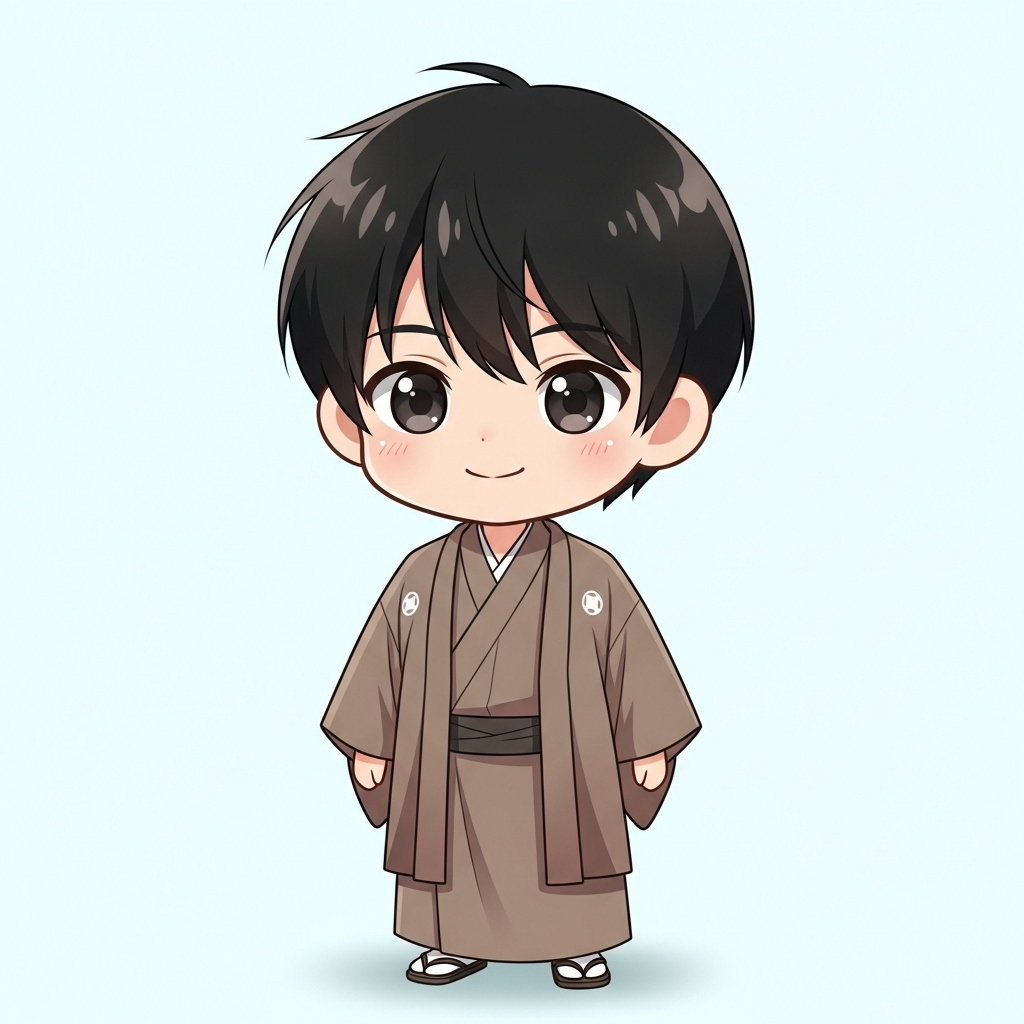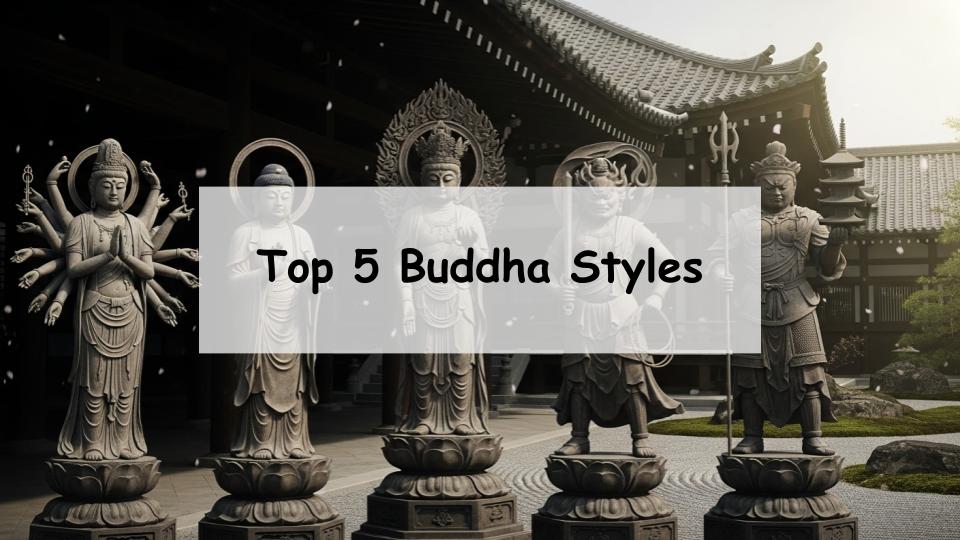“Buddhist statues come in so many forms, but I can’t tell the difference…” “I see them at temples, but what do they actually mean?” — If you’ve ever had these thoughts, you’re not alone.
To put it simply, each Buddhist statue represents a specific role, meaning, or blessing. Understanding the basics helps you appreciate Buddhist temples and teachings more deeply and personally.
This article offers a beginner-friendly ranking of the most well-known Buddhist statues, explaining the types, meanings, and features of each. By the end, you’ll not only understand who’s who among the Buddhas, but also enjoy temple visits and Buddhist art more fully.
- What Are Buddhist Statues? A Simple Guide for Beginners
- Top 5 Most Popular Buddhist Statues: Meaning & Features
- How to Recognize Buddhist Statues: What to Look For
- Visiting Buddhist Statues: Best Spots for Beginners
- Conclusion: Know the Types of Buddhist Statues and Enjoy Them More
- A Message from the Guide
What Are Buddhist Statues? A Simple Guide for Beginners
What Is a Buddhist Statue?
A Buddhist statue represents a sacred figure in Buddhism—such as a Buddha, Bodhisattva, Wisdom King, or Heavenly Being. These statues are often enshrined in temples and crafted from wood, bronze, stone, or lacquer. They help convey Buddhist teachings through visual form and provide a focus for faith and devotion.
Why Were Buddhist Statues Created?
Originally, early Buddhism avoided depicting Buddha in human form. But as the faith spread, visual representations were developed to help followers connect with the teachings. Seeing the Buddha’s image provided a tangible presence and spiritual comfort, especially for those seeking blessings or guidance.
How Are Buddhist Statues Categorized?
Buddhist statues fall into four main categories: Nyorai (Buddhas), Bosatsu (Bodhisattvas), Myōō (Wisdom Kings), and Tenbu (Heavenly Beings).
Nyorai are enlightened beings who have achieved ultimate wisdom.
Bosatsu are compassionate figures who help others reach enlightenment.
Myōō have fierce expressions and destroy evil to protect the Dharma.
Tenbu are guardian deities adapted from ancient Indian gods.
Top 5 Most Popular Buddhist Statues: Meaning & Features
No.1: Kannon Bosatsu (Avalokiteśvara Bodhisattva)
Features and Meaning
Kannon Bosatsu, often translated as “The Bodhisattva Who Listens to the Cries of the World,” is a symbol of compassion who hears the suffering of all beings and rushes to their aid. It is said that Kannon can take on 33 different forms to help those in need, making this deity one of the most versatile and approachable in Buddhist tradition. With a gentle expression and graceful standing posture, Kannon is revered across Japan and enshrined in countless temples.
For those struggling with issues in love, family, or personal relationships, Kannon offers a comforting presence that embraces the heart with kindness. If you are seeking a Buddha who gently stays by your side and understands your emotional struggles, Kannon Bosatsu is believed to bring particularly strong spiritual support.
Famous Temples: Sensō-ji (Tokyo), Kiyomizu-dera (Kyoto)
Sensō-ji houses a revered statue of Kannon and is Tokyo’s oldest temple. Kiyomizu-dera in Kyoto is also dedicated to Kannon and draws millions of visitors annually.
No.2: Amida Nyorai (Amitābha Buddha)
Features and Meaning
Amida Nyorai, the Buddha of Infinite Light and Life, is revered as the principal deity of the Western Pure Land. He is believed to guide souls to paradise after death, offering salvation and peace. For centuries, Amida has been a central figure of devotion, especially among followers of the Jōdo and Jōdo Shinshū sects. His serene and compassionate expression brings comfort to countless worshippers.
For those who have lost a loved one or are contemplating the afterlife and the meaning of life, Amida Nyorai offers a deep sense of peace and spiritual reassurance.ects.
Famous Temples: Byōdō-in (Kyoto), Zenkō-ji (Nagano)
Byōdō-in’s Phoenix Hall features a famous Amida statue that is a national treasure. Zenkō-ji in Nagano also enshrines an ancient Amida triad.
No.3: Dainichi Nyorai (Mahāvairocana Buddha)
Features and Meaning
Dainichi Nyorai is regarded as the embodiment of the ultimate truth of the universe and holds a central position in esoteric Buddhism. Symbolizing wisdom and light, Dainichi is considered the source of all Buddhas. His serene seated posture exudes overwhelming dignity and a tranquil, powerful presence.
As a representation of the universe itself, Dainichi Nyorai is especially recommended for those seeking personal growth and a deeper understanding of life’s essence. He offers profound guidance to people standing at life’s crossroads or those in search of deep introspection.
Famous Temples: Tō-ji (Kyoto), Kongōbu-ji (Wakayama)
Tō-ji’s three-dimensional mandala places Dainichi at its center. On Mount Kōya, Kongōbu-ji also reveres Dainichi as the principal Buddha.
No.4: Fudō Myōō (Acala)
Features and Meaning
Fudō Myōō is known for his fierce expression and the flames that surround him, but his true essence comes from compassion aimed at guiding people onto the right path. He possesses the power to cut through evil and burn away worldly desires, playing a vital role in Shugendō and esoteric Buddhism.
Fudō Myōō is especially effective for those seeking decisiveness, self-discipline, or protection from misfortune. He grants strength in moments when mental resilience is most needed.
Famous Temples: Naritasan Shinshō-ji (Chiba), Myōō-in (Wakayama)
Naritasan Shinshō-ji draws devotees seeking safety and blessings. At Mount Kōya, Myōō-in venerates Fudō as a key protector.
No.5: Bishamonten (Vaiśravaṇa)
Features and Meaning
Bishamonten is revered as the god of war and wealth, and is one of the Four Heavenly Kings. Known for his fierce appearance clad in armor, he is widely respected as a protector who drives away evil and brings good fortune.
Popular among those praying for business success and victory, Bishamonten is the ideal deity for anyone looking to boost their career, luck in competitions, or financial fortune. He is believed to provide strong support for people striving for success or taking on new challenges.
Famous Temples: Kurama-dera (Kyoto), Tōdai-ji Hokkedō (Nara)
Kurama-dera is known for deep faith in Bishamonten, while Tōdai-ji’s Hokkedō features a beautifully carved statue of him.
How to Recognize Buddhist Statues: What to Look For
Identifying by Hands, Postures, and Expressions
Buddhist statues can be distinguished by what they hold, the shapes of their hands (called mudra), and their expressions. Amida often forms the meditation or welcome mudra. Kannon holds lotus flowers or vases. Fierce-looking Myōō wear scowls, while serene Nyorai reflect peace and enlightenment.
Standing, Sitting, and Half-Lotus Positions
Statues may be standing (ritsuzō), sitting (zazō), or in half-lotus thought pose (hankazō). Standing figures suggest swift action to help, sitting indicates inner calm and enlightenment, and half-lotus implies contemplation or compassion in progress.
Materials and Carving Styles
Materials include wood, bronze, stone, and lacquer. Carving styles evolved through eras: simple and spiritual in the Asuka period, more detailed in the Nara and Heian periods. Understanding these styles helps you appreciate Buddhist statues as both spiritual and artistic objects.
Visiting Buddhist Statues: Best Spots for Beginners
Top 5 Temples for First-Time Visitors
If you’re new to Buddhist statues, start with accessible and iconic temples. Try Kiyomizu-dera or Tō-ji in Kyoto, Tōdai-ji or Kōfuku-ji in Nara, and Sensō-ji in Tokyo. These places offer both spiritual atmosphere and breathtaking sculptures.
Etiquette and Viewing Tips
When viewing statues, begin with a respectful bow or moment of silence. Appreciate their posture, expression, and surroundings. Look at details from multiple angles to gain a deeper sense of the statue’s meaning and artistry.
Photography and Visiting Rules
Photography may be prohibited in some temple halls. Always check signs or ask staff. Remove shoes if required, speak softly, and avoid blocking others during your visit. Respect for the space enhances the spiritual experience.
Conclusion: Know the Types of Buddhist Statues and Enjoy Them More
Find the Buddha That Speaks to You
Each Buddha or Bodhisattva has a unique meaning. Choosing one that aligns with your wishes—compassion, wisdom, protection, or prosperity—makes your practice more personal and fulfilling.
Discovering Deeper Meaning Through Understanding
Learning the stories and symbolism behind Buddhist statues transforms your experience from casual viewing to spiritual insight. The more you know, the more rewarding your encounters with Buddhist art and temples will become.
Whether you’re just curious or seeking a deeper path, Buddhist statues offer a rich and peaceful gateway into one of the world’s most profound spiritual traditions. Why not begin your journey today?
A Message from the Guide

My favorite is the Dainichi Nyorai statue at To-ji Temple.























Comment